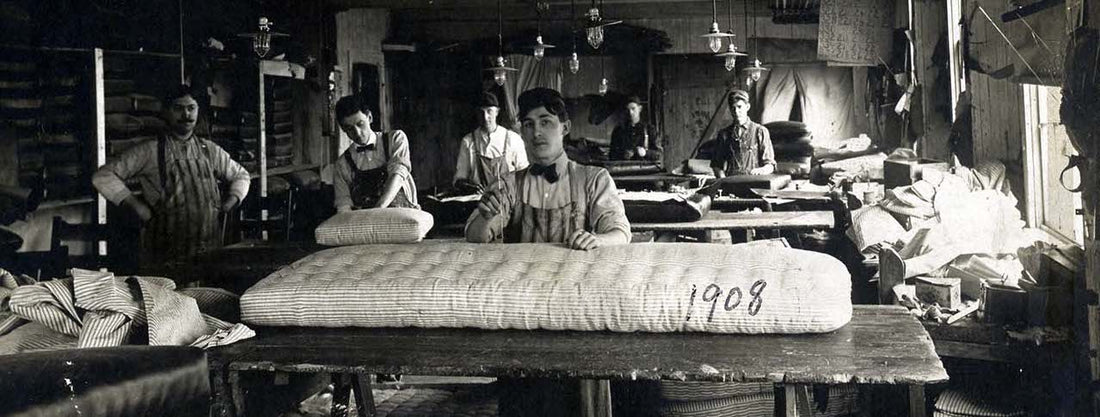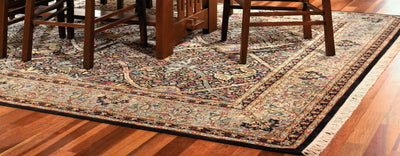
People Skills: The Hands that Make Stickley
Share
 Print
Print
[originally posted December 2021]
We talk quite a lot in this blog about the vision that went into building the company and the inspiration of those who design our products. This month, let’s talk about the dedicated men and women whose hands create the furniture itself. From its earliest days, Stickley has been a company determined to employ the most skilled craftspeople while providing a positive and rewarding work environment.

Prioritizing people A key tenet of the Arts and Crafts movement in the late 19th century was attention to the conditions in which workers labored—that they should be safe, valued, and personally fulfilled by the work they create, not simply faceless cogs in an industrial machine. As he established his Craftsman Workshops in Eastwood, New York, just after the turn of the century, Gustav Stickley made every effort to ensure his employees were able to both work and live in good conditions.


Samuel Howe described a visit to Eastwood in The Craftsman in 1902: “Surely, if there be anything in the claim that a beautiful environment adds a tonic to the worker and is a stimulant to his ideals and ambitions, this band of workers has all that nature can supply.” An early advertisement for a residential development near the factory encourages workmen to “be near your work while your family enjoys good health, pure air and full comfort.”
When Leopold and John George Stickley launched their own furniture company in Fayetteville, quality craftsmanship was their standard. A small operation grew over the decades with the success of Leopold’s colonial revival Cherry Valley Collection, and the expanding team of highly skilled woodworkers produced the coveted furniture for customers far and near.


Rebuilding Years after Leopold died, Alfred and Aminy Audi purchased L. & J. G. Stickley in 1974 and found its workforce badly depleted with many of its master craftsmen retired or about to retire. Rebuilding this community of workers became a top priority. The Audis convinced a number of those veteran workers to come back (or stay) and train the next generation in the essential skills of their craft.


Against the advice of Leopold’s widow, Louise (“Young man, don’t hire any women or long-haired kids, they’re trouble.”), Mr. Audi made a point of hiring employees of all kinds, women and long-haired kids included.

1985 Factory
Stickley runs in the family If you need proof that the company values its employees, consider the fact that some of those long-haired kids are still with Stickley more than 40 years later!


In fact generations of families have found homes at Stickley. Jim Rider, Sr., started at the old Fayetteville factory more than 45 years ago, and his son, Jim Jr., has passed the 20-year mark. Another 45-year veteran, Doug Manning, followed his mother (who had a remarkable 50 years of service!) into the company, and his wife, Beverly, was also a long-time employee. These are just a few examples of our generational ties.
A diverse mosaic A particular point of pride at Stickley today is its long history of welcoming refugees from all corners of the globe. It began in the early 1980s when the Audi’s church, Pebble Hill Presbyterian, sponsored a family from Laos. They immediately offered the father, Boun Norasing, a job at the factory; he stayed for more than 20 years, and other members of his family came onboard as well. From that day on, Stickley has worked closely with the Refugee Resettlement Program, Interfaith Works, and Catholic Charities of Onondaga County to provide work for as many men and women as possible. Other employees, many refugees themselves, act as mentors and trainers to the newest arrivals, especially those who speak limited English. Over the years, Stickley has had as many as 38 nationalities represented in its workforce at one time!
Making their mark
Whatever their histories, Stickley’s craftspeople will agree that they feel appreciated, cared for, and a part of something special. Every piece of Stickley furniture passes through the hands of so many artisans, with each person making a specific contribution that shapes the final product. The personal satisfaction that comes with doing such exceptional work is surely what the founders of Arts and Crafts envisioned and what the Audis value and honor as the next generation leads the company.
Additional sources:
Mrs. Aminy Audi, CEO and Chair of the Board
American Furniture Hall of Fame, “Oral History Interview with Aminy Audi,” April 14, 2016.
Amanda Clifford, Director, The Stickley Museum
Howe, Samuel. “A Visit to the Workshops of The United Crafts at Eastwood, New York”. The Craftsman vol. III, October 1902.












